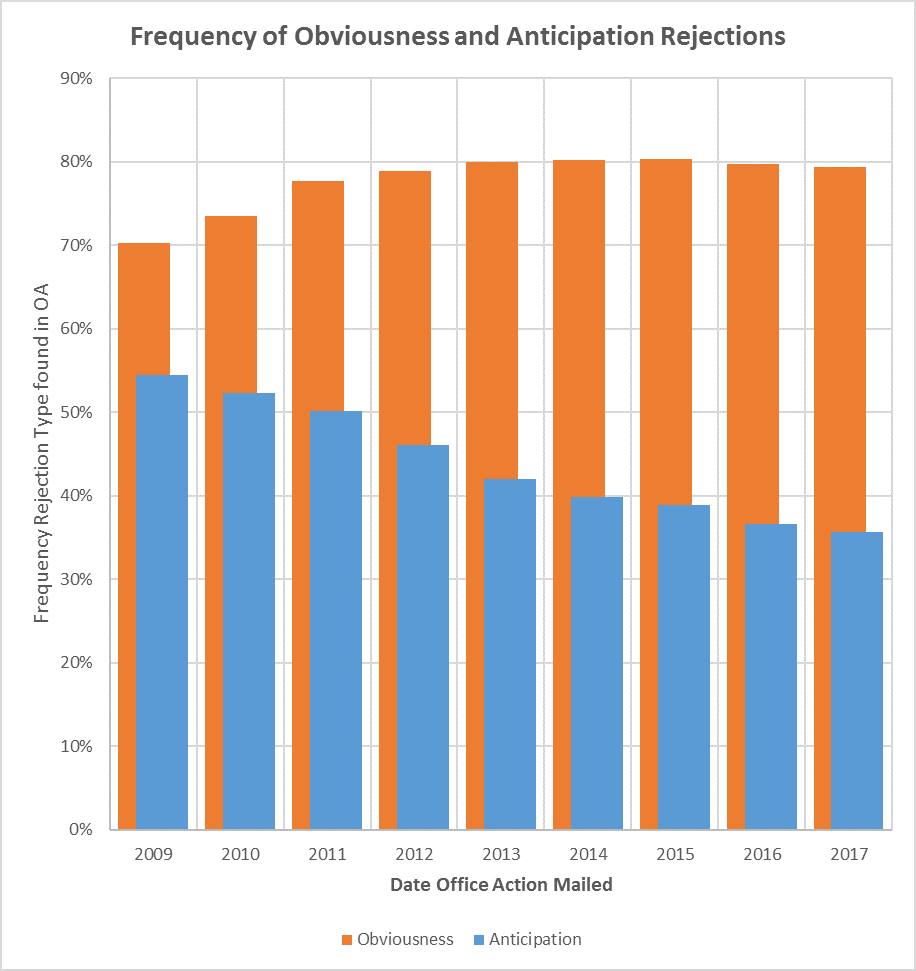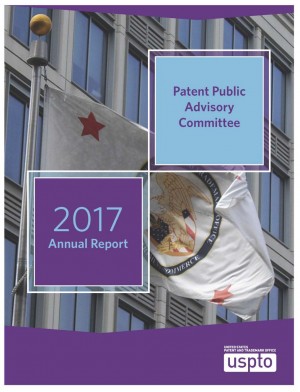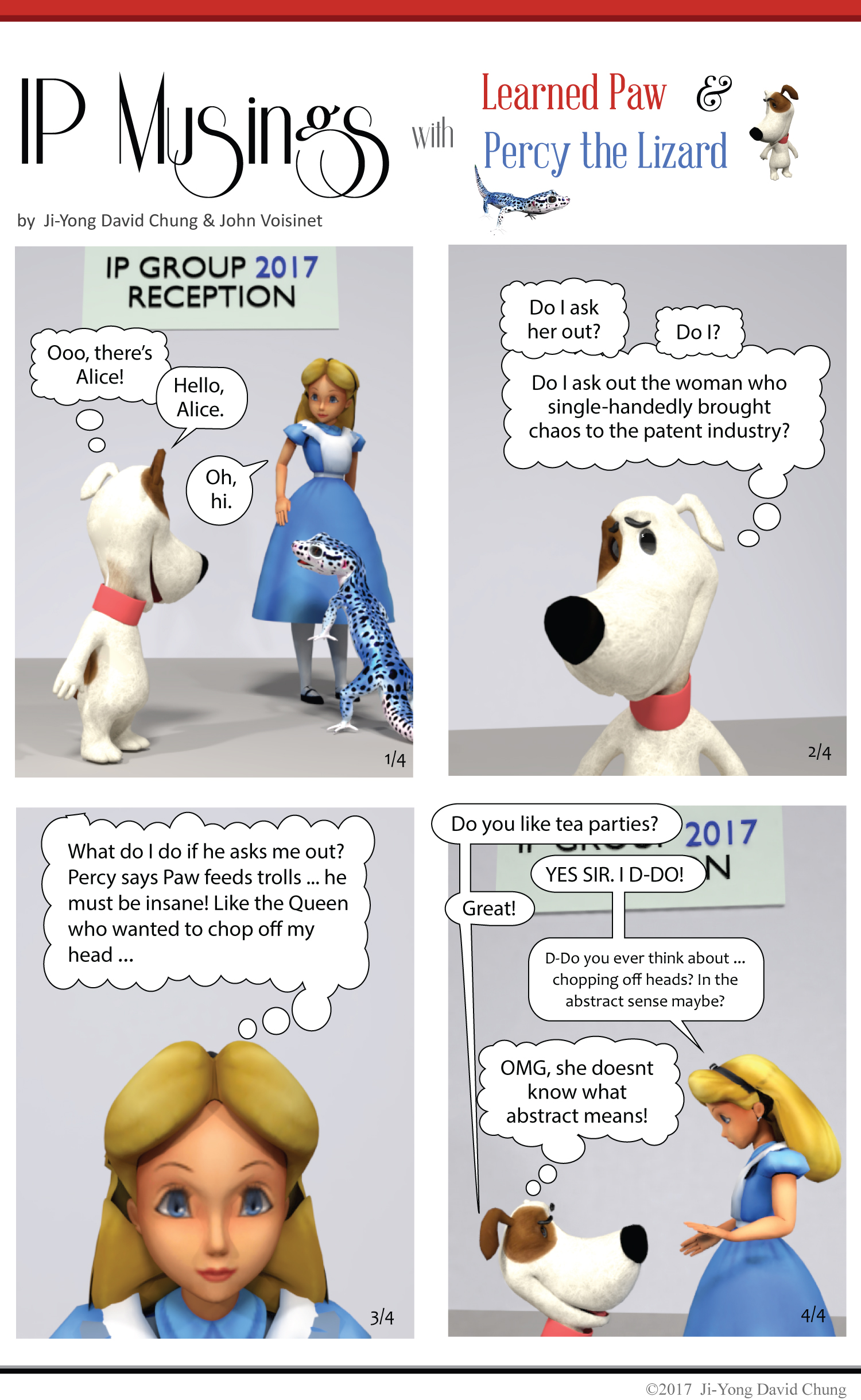I asked Prof. Daniel H. Brean for this guest post that stems from his new paper on international patent law issues titled Business Methods, Technology, and Discrimination. Brean is an assistant professor at Akron School of Law and Of Counsel at The Webb Law Firm. – DC
by Daniel H. Brean
The United States is obligated under the Trade-Related Aspects of Intellectual Property Rights (TRIPS) treaty to make patent rights available and enjoyable without discrimination as to the “field of technology” of the invention.[i] No specific areas of technology may be singled out for unjustified special treatment.
In a new paper (Business Methods, Technology, and Discrimination, 2018 Mich. St. L. Rev. __ (forthcoming), available at https://ssrn.com/abstract=3071000), I argue that the United States is doing just that with respect to computer-implemented business methods. Doctrinally, such methods are subject to an especially high bar for patent eligibility. Statutorily, patents on such methods may be challenged in invalidity proceedings that are exclusively available for so-called “covered business method patents.” The law seems to reflect a skepticism that computer-implemented business methods should be broadly eligible for patenting, as well as a distaste for the aggressive enforcement of many such patents by patent assertion entities. While these may be real problems and serious policy challenges, discrimination by technological field is not a TRIPS-compliant solution.
Discrimination can be de jure—where the law facially discriminates—or de facto. De facto discrimination can be shown by evidence of the discriminatory effects of the law, as well as by showing that a discriminatory purpose can be inferred from the objective characteristics of the law.
From a doctrinal standpoint, Alice v. CLS Bank[ii] appears to have caused at least de facto discrimination against what the Court considered “mere” computerization of business methods. Though rooted in Mayo v. Prometheus’s[iii] field-neutral analysis, Alice fashioned a new rule against “generic computer implementation” of business practices. The result is that the vast majority of challenged patents in the computer-implemented business method space have been rendered ineligible in district courts, in the Federal Circuit, and in the PTAB. For applications still in prosecution, Alice rejections are disproportionately affecting the technology center that includes business method art units, with most rejections being applied in the e-commerce art units.
The upshot of the post-Alice landscape seems to be that improving computer technology per se is patent eligible, as is using computers to solve industrial or computer-centric problems, but using computer technology to facilitate a business process is not. When Alice purports to exclude generic computerization from patenting, it essentially draws a line between using technology and creating technology. Alice calls the former non-technology when what it really means is non-inventive, which is beside the point. Many have criticized Alice for how the framework’s “search for an inventive concept” improperly blurs the line between § 101 and §§ 102-103, flying in the face of Diamond v. Diehr’s proclamation that the novelty of the components used or steps performed in a method should have “no relevance” to a § 101 determination.[iv] TRIPS art. 27.1 itself expressly distinguishes the idea of being within a “field of technology” from the notion that patentable inventions must also be “new” and “involve an inventive step.” For Alice to exclude almost all computerized business methods from the patent system for these reasons, but on § 101 grounds, lacks coherence and appears at least de facto discriminatory.
By contrast, the Covered Business Method Review (“CBM”) program presents a fairly clear case of de jure discrimination. Alongside the creation of two other technology-neutral proceedings (inter partes review and post-grant reveiew), Congress created the CBM program, limited it to “covered business method patents,” and allowed for challenges on § 101 grounds to be made.[v] Although Congress purported to exclude “technological inventions” from the program, the Federal Circuit and the USPTO have closely tied the reach of the CBM program to Alice, such that CBM patents are now largely coextensive with the computerized business methods that the courts, following Alice, deem ineligible.[vi] As expected, patent claims that reach a final judgment in the CBM program are being invalidated at very high rates, especially on § 101 grounds. On top of that, the CBM program even includes two provisions that uniquely disadvantage the owners of CBM patents: (1) a narrow estoppel provision that gives petitioners broader abilities to challenge CBM patents in both the PTAB and district court;[vii] and (2) a rare right for interlocutory appeal of any decision denying a motion to stay parallel litigation—with even rarer de novo appellate review.[viii]
To be clear, not all differential treatment rises to the level of TRIPS-violating discrimination. In the pharmaceutical context, for example, the inventions are subject to regulations and market restrictions that can justify some special accommodations. A member country’s patent laws may properly extend the term of a drug patent to offset a lengthy regulatory review period, or may properly allow generic drug makers to begin seeking their own regulatory approval during the patent term.[ix] But the United States’ handling of computer-implemented business methods seems to go beyond the kind of justifiable differential treatment that TRIPS tolerates. For computer-implemented business methods, the legal differences in treatment discussed above correspond to nothing unique about the subject matter, but arguably reflect broader problems in the United States patent system concerning patent examination quality and litigation abuse.
None of this discrimination is in violation of the treaty, of course, unless computer-implemented business methods are a “field of technology” under art. 27.1. Congress and the USPTO have ostensibly assumed not, but there are several good reasons to interpret TRIPS as deeming such methods technological. First, most definitions of “technology” encompass not only creation but also use of technological tools—a view that is consistent with Diehr’s proscription against novelty forming a part of the § 101 analysis. Second, although business methods per se were not clearly patent eligible in the U.S. until 1998[x] (three years after TRIPS went into effect), many computerized processes had long been eligible for U.S. patent protection when TRIPS was negotiated. Third, the U.S. has on ten separate occasions questioned, for TRIPS compliance purposes, whether the laws of other countries provided adequate protection for software and business methods.[xi] Fourth, though the U.S. has been an outlier among TRIPS members in patenting non-computerized business methods, it is not alone.[xii] Fifth, patenting computer-implemented business methods not only accords with the broad “useful arts” scope of patent systems historically,[xiii] but also reflects modern trends applying more scientific and technological rigor to business and financial practices.[xiv]
The fact that at least some computer-implemented business methods are patent eligible in the U.S. itself suggests that the field is technological, even if many methods in the field ultimately fall short on inventive merit. Eligibility at the threshold is a long way from patentability, and what Alice would view as mere computerization of a well-known business process will rarely be inventive enough to be patented as a novel, nonobvious process. But arranging and employing computers and software for practical business purposes is nonetheless a technological endeavor that brings such methods under TRIPS’ protections.
As the United States considers more changes to the availability and enjoyment of patent rights, it should end this discrimination in favor of technology-neutral practices or reforms.[xv] Otherwise, it sets a precedent of singling out disfavored technologies for disadvantageous treatment on a country-by-country basis, which could undermine the international patent law harmony that TRIPS is intended to facilitate.
= = = = =
[i] TRIPS art. 27.1 (“[P]atents shall be available for any inventions, whether products or processes, in all fields of technology, provided that they are new, involve an inventive step and are capable of industrial application. … [P]atents shall be available and patent rights enjoyable without discrimination as to the place of invention, the field of technology and whether products are imported or locally produced.”).
[ii] Alice Corp. Pty. Ltd. v. CLS Bank Int’l, 134 S. Ct. 2347 (2014).
[iii] Mayo Collaborative Servs. v. Prometheus Labs., Inc., 132 S. Ct. 1289 (2012).
[iv] Diamond v. Diehr, 450 U.S. 175, 187-88 (1981) (“The ‘novelty’ of any element or steps in a process, or even of the process itself, is of no relevance in determining whether the subject matter of a claim falls within the § 101 categories of possibly patentable subject matter. … It is inappropriate to dissect the claims into old and new elements and then to ignore the presence of the old elements in the analysis. This is particularly true in a process claim because a new combination of steps in a process may be patentable even though all the constituents of the combination were well known and in common use before the combination was made.”); cf. KSR Int’l Co. v. Teleflex, Inc., 550 U.S. 398, 418-19 (2007) (“[I]nventions in most, if not all, instances rely upon building blocks long since uncovered, and claimed discoveries almost of necessity will be combinations of what, in some sense, is already known.”).
[v] AIA § 18(d)(1) (defining CBM patent generally as “a patent that claims a method or corresponding apparatus for performing data processing or other operations used in the practice, administration, or management of a financial product or service”).
[vi] See Versata Dev. Group, Inc. v. SAP Am., Inc., 793 F.3d 1306, 1327 (Fed. Cir. 2015) (“[E]ven if the invention required the use of a computer, the claim did not constitute a technological invention. As we are now instructed, the presence of a general purpose computer to facilitate operations through uninventive steps does not change the fundamental character of an invention.”) (citing Alice); Office Patent Trial Practice Guide, 77 Fed. Reg. 48756, 48763-64 (Aug. 14, 2012) (explaining that inventions are not shown to be “technological” by: (1) the “recitation of known technologies”; (2) “reciting the use of known prior art technology”; or (3) “combining prior art structures to achieve the normal, expected, or predictable result of that combination.”).
[vii] Compare AIA § 18(a)(1)(D) (applying estoppel only to arguments actually “raised” by the petitioner) with 35 U.S.C. §§ 315(e)(2), 325(e)(2) (applying estoppel to all arguments that the petitioner “raised or reasonably could have raised”).
[viii] AIA § 18(b)(2).
[ix] See Report of WTO Dispute Settlement Panel, Canada-Patent Protection of Pharmaceutical Products, WT/DS114/R (March 17, 2000), at 170-71 (“Article 27 does not prohibit bona fide exceptions to deal with problems that may exist only in certain product areas. … [Rather, Article 27 is concerned with] the unjustified imposition of differentially disadvantageous treatment.”); see also 35 U.S.C. § 156(c) (extending patent term to offset regulatory review); 35 U.S.C. § 271(e) (immunizing certain regulatory-approval activities from infringement liability).
[x] State Street Bank and Trust Company v. Signature Financial Group, Inc., 149 F.3d 1368 (Fed. Cir. 1998) (holding patent eligible a business process involving share price calculations because it “produces a useful, concrete and tangible result”).
[xi] Stefania Fusco, TRIPS Non-Discrimination Principle: Are Alice and Bilski Really the End of NPEs?, 24 Tex. Intell. Prop. L.J. 131, 147, 150 (2016) (concluding that “the U.S. has consistently interpreted of Article 27(1) TRIPS as requiring WTO countries to provide protection to both software and business methods”).
[xii] See John R. Allison & Emerson H. Tiller, The Business Method Patent Myth, 18 Berkeley Tech. L.J. 987, 1022 (2003) (“[M]ost other countries do not recognize patents on business methods.”); Rajnish Kumar Rai & Srinath Jagannathan, Do Business Method Patents Encourage Innovation?, 2012 B.C. Intell. Prop. & Tech. F. 1, 5-6 (2012) (“Japan, Australia, Singapore and possibly Korea generally appear to follow the U.S., whereas the European Union (‘EU’), the United Kingdom (‘UK’), Canada and India are more conservative on the issue and do not favor BMPs.”).
[xiii] See generally Sean M. O’Connor, Finding the Lost “Art” of the Patent System, 2015 U. Ill. L. Rev. 1397, 1476 (2015) (explaining that “useful arts,” in its proper historical context, would include “any and all arts that involve the use of natural materials or forces for practical ends” that can be objectively measured, as opposed to measured only by taste or sentiment).
[xiv] John F. Duffy, Why Business Method Patents?, 63 Stan. L. Rev. 1247, 1263 (2011) (explaining that “[a]s early as the mid-twentieth century, engineers and physical scientists were already migrating into the academic realms of business, economics, and management”).
[xv] For example, avoiding the § 101 question and resolving such issues on other patentability grounds. See Dennis Crouch & Robert Merges, Operating Efficiently Post-Bilski by Ordering Patent Doctrine Decision-Making, 25 Berk. Tech. L. J. 1673, 1686-87 (2010) (describing studies showing that 84-94% of claims rejected on Section 101 grounds in the USPTO are also rejected on other grounds, which “show[s] an exceptionally high rate of doctrinal overlap and lends credence to the idea that, by initially avoiding subject-matter-eligibility questions, many of those potential issues will be avoided”).




